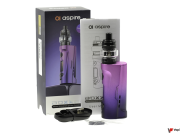Australia has introduced a national school-based anti-vaping program, OurFutures, aimed at curbing youth vaping. Developed by the University of Sydney’s Matilda Centre, it targets students in Years 7 and 8, offering four online lessons addressing vaping harms, social media influence, assertive communication, and seeking help. Early trials in 40 schools have allegedly shown promising results, with improved knowledge and reduced intentions to vape (even though the actual long-term effects remain unclear).
A similar effort was launched back in 2022 by the University of Queensland and Western Sydney University, when students from Swinburne University of Technology competed in an advertising capstone challenge (2022 ACC). The students pitched their ideas for anti-vape campaigns to agency and client executives from Bastion Creative and The Cancer Institute NSW. The 2022 ACC encouraged the participant students to come up with campaign solutions on how to address the issue of teen vaping among young people in NSW.
In line with patterns around the world, youth vaping rates have risen sharply, with nearly one-third of Australian high school students having tried vaping by 2022-23. Many health groups and policymakers claim that vapes contain harmful substances like formaldehyde, acetone, and heavy metals, posing significant health risks, especially to young users. However, actual research has shown that actually when present, these are found in miniscule quantities insignificant to human health.
Why do teens vape?
Despite this of course, no one is in favour of youth vaping uptake. Vaping is only recommended for smokers seeking to quit cigarettes or at best switching to safer alternatives so as to reduce harm. And while education is essential, experts stress it is insufficient on its own. Young people are influenced by social norms, families, and societal structures, making broader strategies vital.
Moreover, studies have shown links between stress, trauma, and psychological issues, such as anxiety and depression, with increased vaping among teenagers. Many teens turn to vaping as a coping mechanism to manage emotional distress or overwhelming experiences. Studies suggest that youth facing adverse childhood experiences or high stress levels are more likely to engage in substance use including vaping, seeking relief or distraction. Addressing these underlying psychological factors is crucial in tackling teen vaping and promoting healthier coping strategies, and would be more effective then any programme presenting all the reasons to not vape.
Sticking to a failing strategy
Meanwhile, Australian policymakers are adamant that the harsh anti-vaping measures they set, including limiting vape sales to pharmacies, restricting flavours, and limiting advertising, complement the new school programmes. They claim that these laws have significantly reduced vape imports, with the Australian Border Force intercepting hundreds of thousands of illegal products. However, studies and real-world data tell a different story.
Discussing this in a recent blog, local smoking cessation expert Dr. Colin Mendelsohn shared a critique by leading Australian expert on alcohol and drug policy, Emeritus Professor Wayne Hall. Discussing Australia’s restrictive vaping policy, Hall highlighted its failure to meet objectives. He advocates for a more balanced approach that addresses both adult smokers’ needs and youth vaping concerns, drawing lessons from international successes.
Introduced in 2016, Australia’s prescription-only model, aims to prevent youth vaping and limit adult access to e-cigarettes unless prescribed as smoking cessation tools. However, this approach has failed on multiple fronts:
- Youth Vaping Uptake: Despite strict regulations, youth vaping persists, with exaggerated claims of an “epidemic” sparking alarm, while current data shows occasional use among adolescents is much lower than lifetime prevalence suggests.
- Adult Access Challenges: Only 10% of the 1.8 million Australian vapers obtained vapes legally in 2023. Many adults bypass the prescription pathway, sourcing products illicitly due to limited doctor endorsements and persistent black-market availability.
- Black Market Expansion: Strict regulations have fueled illicit vape and tobacco markets. Organised crime profits from smuggled products, leading to tax losses and even violent incidents targeting non-compliant retailers.
An alternative model which would actually work
Professor Hall recommends adopting a regulated retail sales model to balance public health goals effectively. Drawing from the US and UK, he proposes a licensing vape and tobacco retailers scheme with strict age-verification protocols, as well as a plain packaging regulation alongside limited advertising to deter youth appeal. He also highlighted the importance of clear (as opposed to the current fear-based misinformation rife ones) messages, emphasizing that non-smokers should not be vaping, while smokers can consider vapes as harm-reduction tools.
Australia’s current policy is based on ideology and prohibition, creating false dichotomies and missed opportunities. A regulated, accessible system could reduce smoking harm while addressing youth concerns, aligning with successful international examples. Part of this reform should include addressing the underlying causes of youth uptake.













